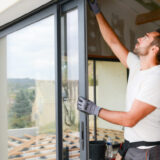Contractors know the value of a good tool. They understand that the right tools can make all the difference in the world when it comes to completing a project. But finding the right tools can feel like a task at times.
In construction and renovation projects, there is a lot of plastering to be done. Over time, it can become inefficient to do things by hand. After all, you wouldn’t hand-screw everything when you can use a drill, right?
That is where a plastering machine can make all the difference in the world.
What Is a Plastering Machine?
A plastering machine is just as it sounds. It is a machine that is used for the purposes of eliminating the manual labour aspect of plastering walls. There is a moveable frame that sits on rollers and it can be adjusted to suit any height that you may be working with.
For construction companies in particular, having a machine to do the plastering can mean major time saved. It also means less money spent on the manual labour that would have been necessary to otherwise get the job done.
Types of Plastering Machines
There are a few different types of plastering machines out there to choose from. Each of them has its own specification, which can determine whether it is suitable for the job at hand.
- Piston Pump: The piston pump is the newest type of plastering device out there on the market today. There are even some that don’t require a compressed air pump in order to pump the plaster. The piston creates compressed air that comes at a great output speed and can cover the kind of area that meets commercial plastering applications.
- Pneumatic Sprayer: This is the simplest to use and probably the easiest to find. It has a hopper that is connected to a separate compressor. You then pour the plaster into the hopper while the compressor creates air to move the plaster onto the walls.
- Worm-Drive Pump: This is the kind of machine that pushes the plater into a spray gun to be applied. The downside with a worm-drive pump is that most of the solvent-based plasters out there won’t work with this machine.
- Peristaltic Pump: The final plastering machine has a tube that gets squeezed by rollers. There is also compressed air that produces the necessary spray trajectory. It can spray textured materials so long as the material isn’t solvent-based.
















